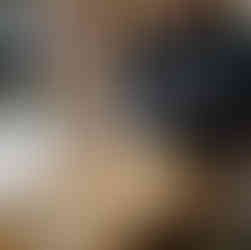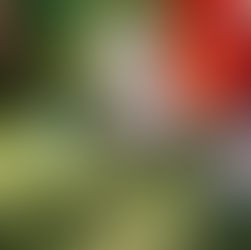Introduction: New Lab
- TerraX Team

- Aug 12, 2022
- 6 min read
Happy Friday, Xplorers!
And more importantly, happy New-Dig-Deeper-Post Day! This update is particularly special, because it’s truly been ten years in the making. You may remember from our very first post that TerraX literally started out in a closet. Yup, we were ducking and dodging just to move around each other in those days — and then we started bringing in artifacts.
When we bring artifacts back from the field, those artifacts have to be cleaned, organized, and studied. We spend time carefully measuring, testing, observing, recording, and interpreting every tiny detail we find, and then we carefully label and pack each item away to be stored in a special curation facility. Sometimes we find only a few artifacts, and sometimes we find thousands, but either way, that whole process takes up a ton of space!
As you can imagine, it wasn’t long before we well and truly outgrew that closet.

Over the years, we’ve been slowly developing a laboratory specially equipped to handle all work relating to the care and handling of artifacts. Some spaces have been better than others, and we’ve had a few bumps along the way, but we’ve made progress. It’s taken several years — and countless house of work put in by our incredible lab staff — but folks, we’ve finally got some incredible news.
That’s right! We’ve opened our incredible new lab facility.
Welcome to the Lab of Luxury
First of all, can we just take a minute to be excited about the fact that we don’t have to squish and squeeze past each other anymore?!

Okay, done with that. But seriously, we’re so grateful for our BRAND NEW lab space. Instead of a closet, we have an entire warehouse dedicated to the incredible work of our laboratory staff. It has enough room for us to spread out, process thousands of artifacts from enormous projects (looking at you, St. Amelia), and still keep everything totally organized. Now, we have enough shelf space to store our packed boxes while they’re waiting for analysis or to be shipped to a curation facility. We even have a dedicated space we use to take photos of the artifacts!
If we sound over-excited, it’s because the importance of this new space truly cannot be overstated. With so much space, our lab staff is able to work more efficiently than ever before. They are a critical part of the work we do here at TerraX! You know what? They deserve a shout out…
Meet This Incredible Team, Y’all

The TerraX laboratory team is led by the one, the only, the lab-tastic Raychel Durdin. Y’all — we can’t emphasize enough how awesome this woman is. From the time she was just six years old in a tiny Mississippi town, Raychel knew she wanted to dig stuff up. At the time, she had decided she wanted to work with dinosaur bones (which isn’t quite the same as archaeology, but — spoiler — we’ll get to that next week), and her mom even gave her a 3D wooden T-Rex skeleton puzzle. Then, at about 8, Raychel decided she was all about mummies — she read all the mummy books, and she was going to be an adventuring archaeologist in Egypt.
But the real break-through happened when Raychel was about 12, when she found glass bottles buried in her backyard. Her very first real artifacts! (You better believe her mom washed and kept those bottles!) From then on, she really started to hone her interests. Raychel thought she might want to become a forensic anthropologist, so she decided to study biological anthropology. Eventually, she decided to go to the University of Mississippi, she majored in Anthropology and performed as many field excavations with her biology professor as she could. Then, she went to grad school (also at Ole Miss) and did research on cranial vault thickness and its association with cribra orbitalia and porotic hyperostosis in a contemporary sample of CT scans (Don’t worry — this writer has no idea what that means either.)
Then came time to find a job and move into the Real World™. Raychel looked around and started applying and interviewing even before finishing her Master’s. Even though she had a pretty hopeful prospect, and even though she wasn’t convinced she fully fit the qualifications, when Raychel came across the advertisement for a new Laboratory Director at TerraX, she went ahead and applied. It was very quickly clear that Raychel was the right person for the job, and she moved to Tuscaloosa and started working before even finishing her thesis!
Raychel has been an integral part of this team ever since, and she’s been assembling an equally lab-ulous (Are you tired of our lab puns yet?) staff. At the moment, we have four other incredible individuals working in the lab, and each one brings his or her own unique skills to the (lab) table.

Joanna Klein is effectively Raychel’s right-hand woman. Joanna does a little bit of everything — from processing to analysis to data compiling and interpreting and even report writing and photography. As you can imagine, we keep her pretty busy! Joanna can handle pretty much any artifacts we throw her way, but her favorites are animal bones and prehistoric ceramics. Joanna is well on her way to a Master’s in Anthropology, and we could not be more proud of her!
Meanwhile, Kelsey Bourlier and Mike Eichstaedt are killing it as a lab tech and lab assistant, respectively. They do so much important work for us — namely keeping us organized and on-track! Pictured here organizing some artifacts and entering information into our artifact log database, Kelsey and Mike are invaluable members of our staff. Seriously — we could not function without these guys. And did we mention they’re super super important?
And finally, we have the spect-lab-ular Julia Sponholtz! Julia is the newest member of the team, but already we can tell that she fits right in. As our Curation and Sample manager, Julia makes sure we are absolutely, positively, 100% organized when it comes to transporting materials around. You see, sometimes it’s necessary to send samples off for testing at a different facility — if we need to perform carbon dating, for example. In that case, someone has to collect the sample to be tested and ensure it travels safe and sound to the right facility, correctly labeled so that we get the correct information back! And whether we send artifacts or samples off for testing or not, we will absolutely have to have them curated. Remember how we said we send artifacts to a special curation facility once they’re carefully packed and labeled? Well, it’s a little more

complicated than that. The thing is, artifacts from each state have to be curated in a curation facility in that state. Since TerraX works all throughout the southeast, that means coordinating with a lot of facilities! But Julia keeps us right on track, and we’re so thankful to have her!
We could not be more excited or grateful for this lab-sational (even we’ll admit that one was a stretch) team. Every person working in our new lab is doing incredible work that allows TerraX to keep running, keep producing high-quality analysis for our clients, and keep learning more about archaeology and the history of our region. If you ever get the chance to talk to these guys and pick their brains, we highly recommend taking it!
Don’t Overlook the Laboratory!
When you hear the word “archaeology,” you may automatically think about men and women in those funny explorer hats digging in the dirt for cool stuff. While you wouldn’t be entirely wrong, some of the most important parts of archaeology happen not in the field but in the lab. Yes, archaeology lab work involves a lot of labeling and organizing, but it’s also where the real meat of analysis and interpretation comes from.
Without the laboratory cataloging and analyzing the artifacts we find in the field, we wouldn’t be able to understand what those artifacts mean. We wouldn’t be able to make interpretations about the types of sites we find or what life was like for the people who lived at those sites, and that’s the whole point!
It’s true, Xplorers — the importance of the lab cannot be overstated. That’s why we’re so grateful for our amazing team and our beautiful new lab space. They allow us to continue doing what we do best — managing cultural resources and learning about our past.
Thank you so much for reading our post today! Be sure to stay tuned for next week — we’ll be doing a deep-dig into some of the processes and techniques the lab uses to do its interpretive work, and we’ll also be talking a little bit about why we DON’T dig up dinosaurs! You won’t want to miss this one.
In the meantime, if you have any questions or comments, you know we always want to hear from you! Reach out to us on Facebook, Instagram, or LinkedIn — we’ll be sure to get back to you. And if you’re an archaeologist looking to get some real-world experience, feel free to drop your resume over on our Careers page. Raychel would love to meet you!
Until next time, keep learning!
— The TerraX Team



















Comments